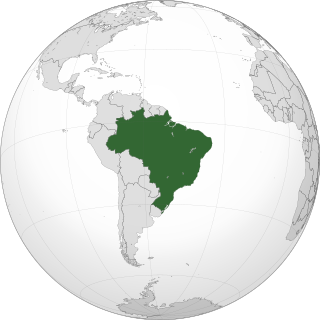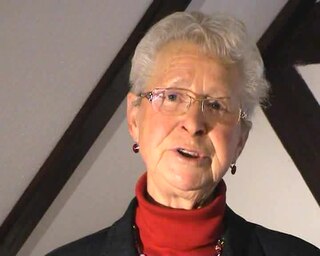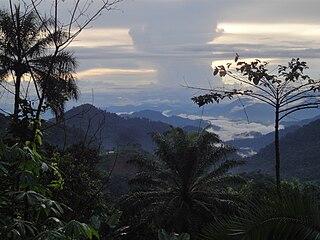Related Research Articles
The term dialect can refer to either of two distinctly different types of linguistic phenomena:
Newfoundland English is a term referring to any of several accents and dialects of Atlantic Canadian English found in the province of Newfoundland and Labrador. Most of these differ substantially from the English commonly spoken elsewhere in Canada and North America. Many Newfoundland dialects are influenced by the dialects of England's West Country, in particular the city of Bristol and the counties of Cornwall, Devon, Dorset, Wiltshire, Hampshire and Somerset, while in terms of general cultural heritage, one estimate claims 80 to 85 percent of Newfoundland's English heritage came from England's southwest. Other Newfoundland dialects are influenced by the dialects of Ireland's southeastern counties, particularly Waterford, Wexford, Kilkenny and Cork. Still others blend elements of both and there is also a discernible influence of Scottish English. This reflects the fact that while the Scottish came in smaller numbers than the English and Irish, they had a large influence on Newfoundland society.

Tsonga or Xitsonga as an endonym, is a Bantu language spoken by the Tsonga people of southern Africa. It is mutually intelligible with Tswa and Ronga and the name "Tsonga" is often used as a cover term for all three, also sometimes referred to as Tswa-Ronga. The Xitsonga language has been standardised for both academic and home use. Tsonga is an official language of South Africa, and under the name "Shangani" it is recognised as an official language in the Constitution of Zimbabwe. All Tswa-Ronga languages are recognised in Mozambique. It is not official in Eswatini.

Brazilian Portuguese is the set of varieties of the Portuguese language native to Brazil and the most influential form of Portuguese worldwide. It is spoken by almost all of the 214 million inhabitants of Brazil and spoken widely across the Brazilian diaspora, today consisting of about two million Brazilians who have emigrated to other countries. With a population of over 214 million, Brazil is by far the world's largest Portuguese-speaking nation and the only one in the Americas.

Hunsrückisch is a German dialect spoken in the Hunsrück region of Germany (Rhineland-Palatinate). This mountainous region of Germany has long been an exporter of emigrants to Brazil, United States, Canada, Australia and other parts of the world.

The Ivatan (Ibatan) language, also known as Chirin nu Ibatan, is a Philippine language of Austronesian origins spoken in the Batanes Islands of the Philippines.
The Assiniboine language is a Nakotan Siouan language of the Northern Plains. The name Assiniboine comes from the term Asiniibwaan, from Ojibwe, meaning "Stone Siouans". The reason they were called this was that Assiniboine people used heated stone to boil their food. In Canada, Assiniboine people are known as Stoney Indians, while they called themselves Nakota or Nakoda, meaning "allies".
Sa or Saa language is an Austronesian language spoken in southern Pentecost Island, Vanuatu. It had an estimated 2,500 speakers in the year 2000.
Garo, also referred to by its endonym A•chikku, is a Sino-Tibetan language spoken in India in the Garo Hills districts of Meghalaya, some parts of Assam, and in small pockets in Tripura. It is also spoken in certain areas of the neighbouring Bangladesh. According to the 2001 census, there are about 889,000 Garo speakers in India alone; another 130,000 are found in Bangladesh.

The dialects of the Bengali language are part of the Eastern Indo-Aryan language group of the Indo-European language family widely spoken in the Bengal region of South Asia. The spoken dialects of Bengali are mutually intelligible with neighbouring dialects.
Ugandan English, or Uglish, is the variety of English spoken in Uganda. The term Uglish is first recorded in 2012. Other colloquial portmanteau words are Uganglish and Ugandlish (2010).

Itawis is a Northern Philippine language spoken by the Itawis people, closely related to the Gaddang speech found in Isabela and Nueva Vizcaya. It also has many similarities to the neighboring Ibanag tongue, while remaining quite different from the prevalent Ilocano spoken in the region and the Tagalog-based Filipino national language.
East Cree, also known as (Eastern) James Bay Cree, and East Main Cree, is a group of Cree dialects spoken in Quebec, Canada on the east coast of lower Hudson Bay and James Bay, and inland southeastward from James Bay. Cree is one of the most spoken non-official aboriginal languages of Canada. Four dialects have been tentatively identified including the Southern Inland dialect (Iyiniw-Ayamiwin) spoken in Mistissini, Oujé-Bougoumou, Waswanipi, and Nemaska; the Southern Coastal dialect (Iyiyiw-Ayamiwin) spoken in Nemaska, Waskaganish, and Eastmain; the Northern Coastal Dialects (Iyiyiw-Ayimiwin), one spoken in Wemindji and Chisasibi and the other spoken in Whapmagoostui. The dialects are mutually intelligible, though difficulty arises as the distance between communities increases.
Linguistics is the scientific study of human language. It is called a scientific study because it entails a comprehensive, systematic, objective, and precise analysis of all aspects of language, particularly its nature and structure. Linguistics is concerned with both the cognitive and social aspects of language. It is considered a scientific field as well as an academic discipline; it has been classified as a social science, natural science, cognitive science, or part of the humanities.

Wabane is a town and council/commune in Cameroon. It is the headquarters of Wabane sub-division in Lebialem division Southwest Region of Cameroon.

Spanish is the most-widely spoken language in Ecuador, though great variations are present depending on several factors, the most important one being the geographical region where it is spoken. The three main regional variants are:
Maia is a Papuan language spoken in the Madang Province of Papua New Guinea, and is a member of the Trans-New Guinea language family. It has a language endangerment status of 6a, which means that it is a vigorous and sustainable language spoken by all generations. According to a 2000 census, there are approximately 4,500 living speakers of the language, who are split between twenty-two villages in the Almani district of the Bogia sub-district.

Tangkhul is a Sino-Tibetan language of the Tangkhulic branch. It is spoken in 168 villages of Ukhrul district, Manipur, India, with speakers scattered in Nagaland and Tripura as well.
Limbum is a Grassfields language of Cameroon, with a small number of speakers in Nigeria. It is used as a trade language by some, but is primarily the mother tongue of the Wimbum people, who live in Donga-Mantung division of the Northwest Region, at the top of the Ring Road.

The Karay-a language is an Austronesian regional language in the Philippines spoken by the Karay-a people, mainly in Antique, Iloilo, Guimaras, and other provinces on the island of Panay, as well as portions of the Soccsksargen region in Mindanao and Palawan.
References
- ↑ Mundani at Ethnologue (18th ed., 2015) (subscription required)
- ↑ "Mundani-English lexicon". SIL International. 24 January 2013.